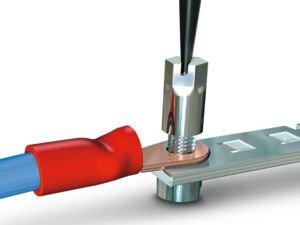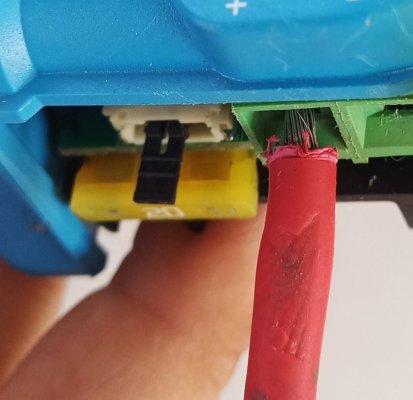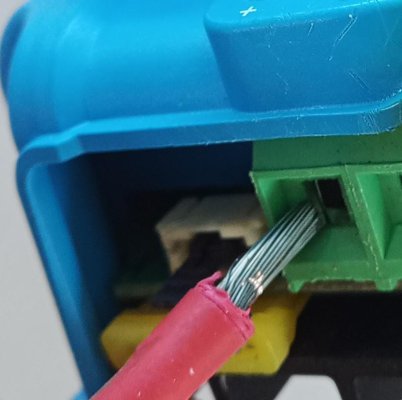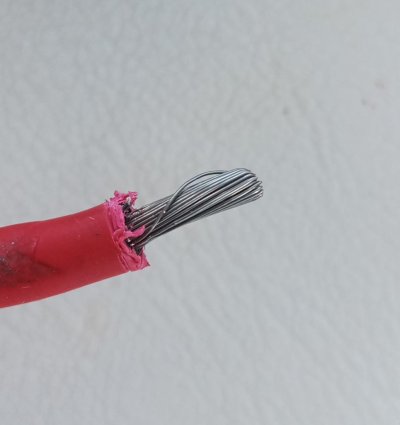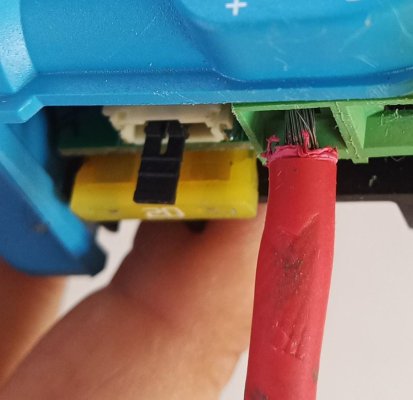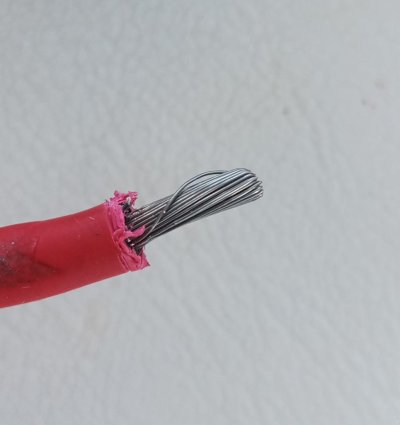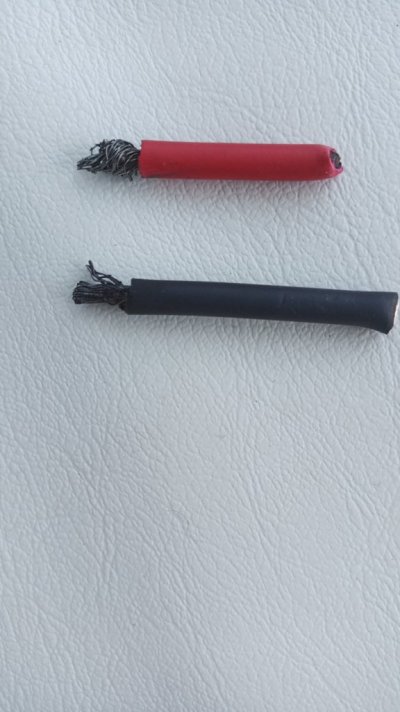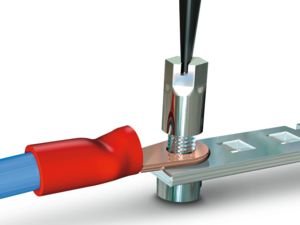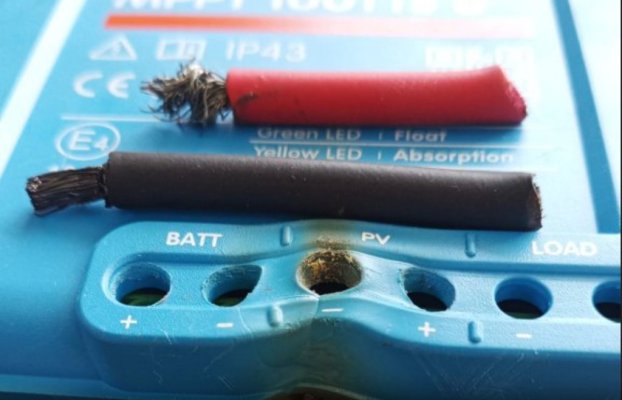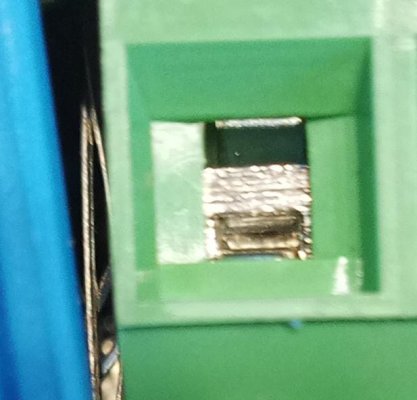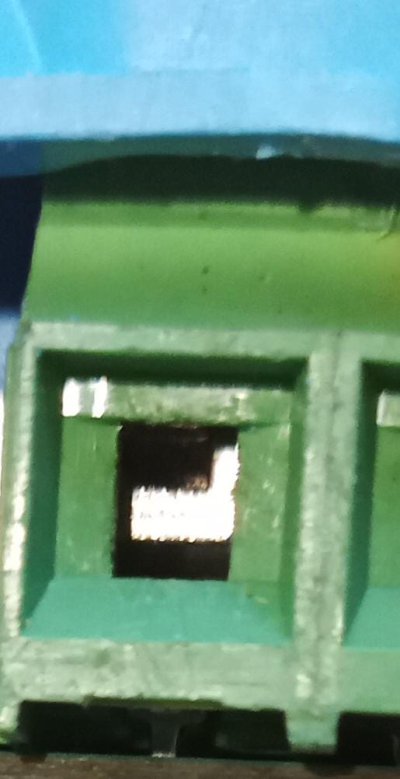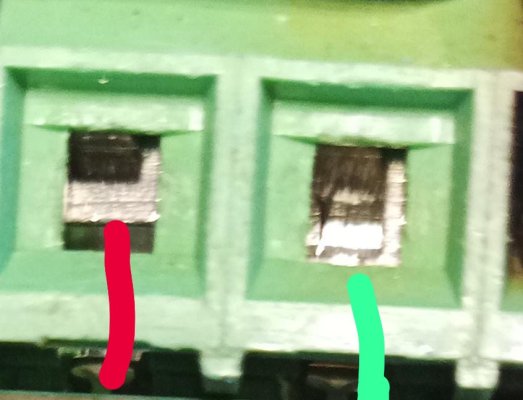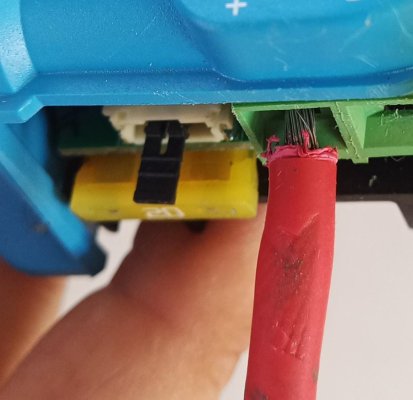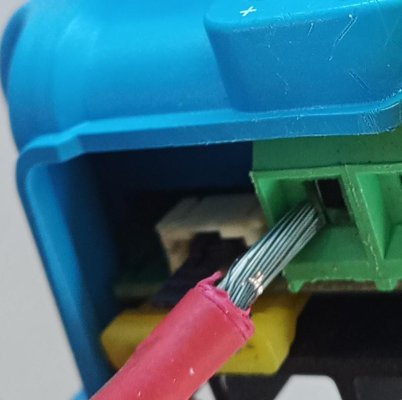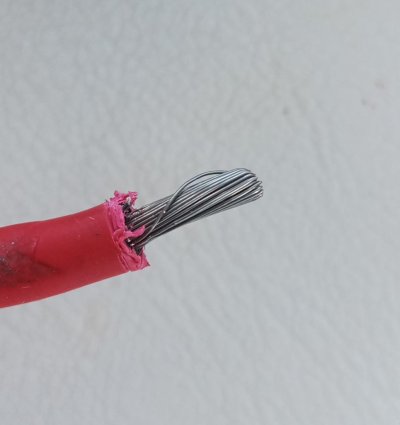In an effort to help you, I've read and understand everything that you have written on this issue.
The MHT article that I linked described the ferrule and it's crimper that worked. If these items are not available in Greece, (I have not checked) I would get them from the closest location and have them shipped to your location. Total weight, about 1kg.
I would also get the torque measuring screwdriver (or =) mentioned in the MHT article. Terminal tightness is key. I would not use Locktite on the terminal screw, even though it would not affect the electrical connection (unless you got really messy with it) which takes place under the plate in the terminal block.
With respect to the marine grade wire not available after looking for a year,......... balderdash!
I found this in a 5 min. google search.
You have likely heard of Nautilus Yacht Equipment as they state that they have been around your neighbourhood for now over 30 years and have multiple, about 10, retail locations in Greece.
They have according to their website in stock at present Ancor (yep, the same brand as in the US of A) 10 ga. marine wire that you can buy by the metre.
Κόκκινο επικαστερωμένο καλώδιο *Με το μέτρο

nautilus.gr
I think they have both red and black in stock.
Always on a budget, if this was me I'd get the 2 conductor cable and if need be, strip the outer sheath off.
It's in stock as well.
Διπλό πλακέ επικασ. καλώδιο 10/2 AWG (2x5 mm2) *Με το μέτρο

nautilus.gr
Shall we leave the rest up to you?
On paper it sounds all very nice that you can get everything in Greece, reality is different however. I know Nautilus well, they have shops all over Greece. But that does not mean that everything on their webshop is actually always available.
Example ?
I have ordered and paid 5 Victron VE direct to USB cables in both Turkey and Greece. Online you can find them in the web shops, but that does not mean they actually have it available. The ones in Turkey never arrived, so I lost the money and had to leave Turkey without them.
The ones in Greece I bought after the company had ensured me they had them on stock. They promised delivery in 3 days after receiving the money. I wired the money, they received it 10 min later and then it started. Reality was they did not have them on stock at all and 3 weeks later I still had not received them. That is when we had to leave Greece. Several weeks later I received a message that they have arrived, but problem is.......I am no longer in Greece.
And that is reality in Greece, Turkey, Croatia etc. You will happily find things on websites, they may even sell it to you, but that does not mean you will get it. What many companies do is offer it for sale and when there are enough orders they will order it from a producer in Europe. Then it will be shipped to Greece when the order is large enough.
So in real life you may be able to buy something now, when they have it on stock again, but you can be in for a long wait if they don't have it. I spoke with DG rubber about one of their suppliers in Greece, they told me that company orders once or twice a year, that is it. So if you happen to be looking for a cable when the stock is low you will be out of luck.
Since it is a boat and I had quite a bit of cables that had simply crumbled, I wanted fire retardant cables, which would not crumble (drying out because of heat) after a certain period of time. That cable was not available, but I did get the option to buy 50 mtr of both cables, in other words the whole roll. I needed 8. Price I got offered (by the supplier in Greece) was 8 euro per meter. So am I now to pay 800 euro for a piece of cable ? I know that is possible, but that is not going to happen and I think you would not do that either.
In short, they did not have the 5 mm2 fire retardant cable, but they did have the 6 mm2 fire retardant cable and as you can see on the pictures, the cable did not burn, the controller on the other hand did.
I know that Victron has the opinion that ONLY if you use the correct cable and correct shoe the connection is safe. Anything else can cause the connection to fail, but that is not their problem anymore.
If you take a look at my other post i just did a test with the wire. Only 3 to 5 mm of the wire actually goes into the connection block, the screw then holds down perhaps 3 mm of that. That does not strike me like a sound design. It may look perfectly fine to you, but reality has shown now (twice) that a dangerous situation can happen when screws come loose.
As for the torque screwdriver. I know that the company, which did the installation, have used it. I, as the end user, should not be required to retorque the screws on a regular basis. If that is a requirement it is a flawed design, it is as simple as that.
The simple solution to this problem is to change this connection block to something like it the last picture. Then you will never have a discussion again about wrong cable, not enough strands, wrong shoes, poor installation etc, which in my opinion is just selling fog to cover up a flawed design.



